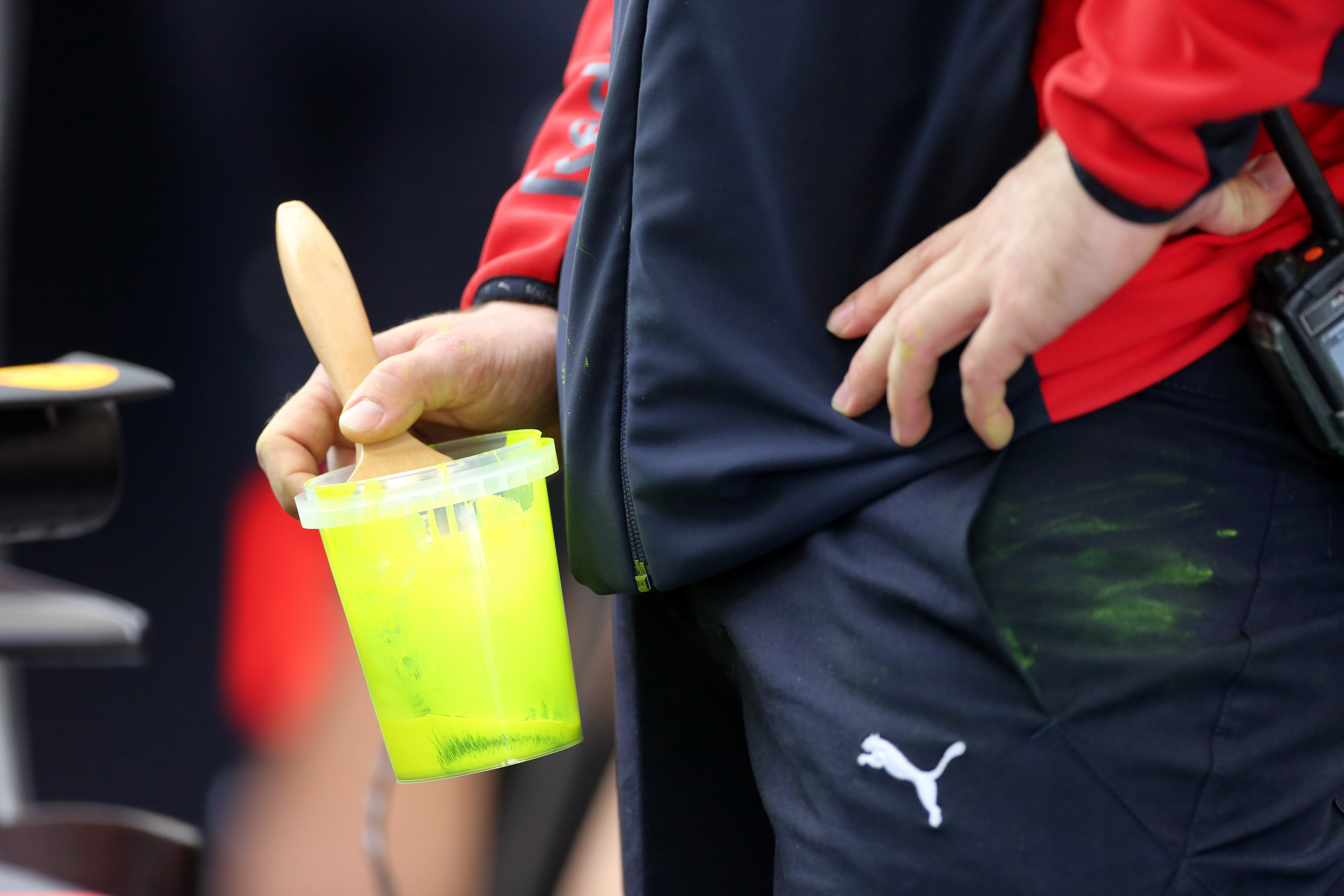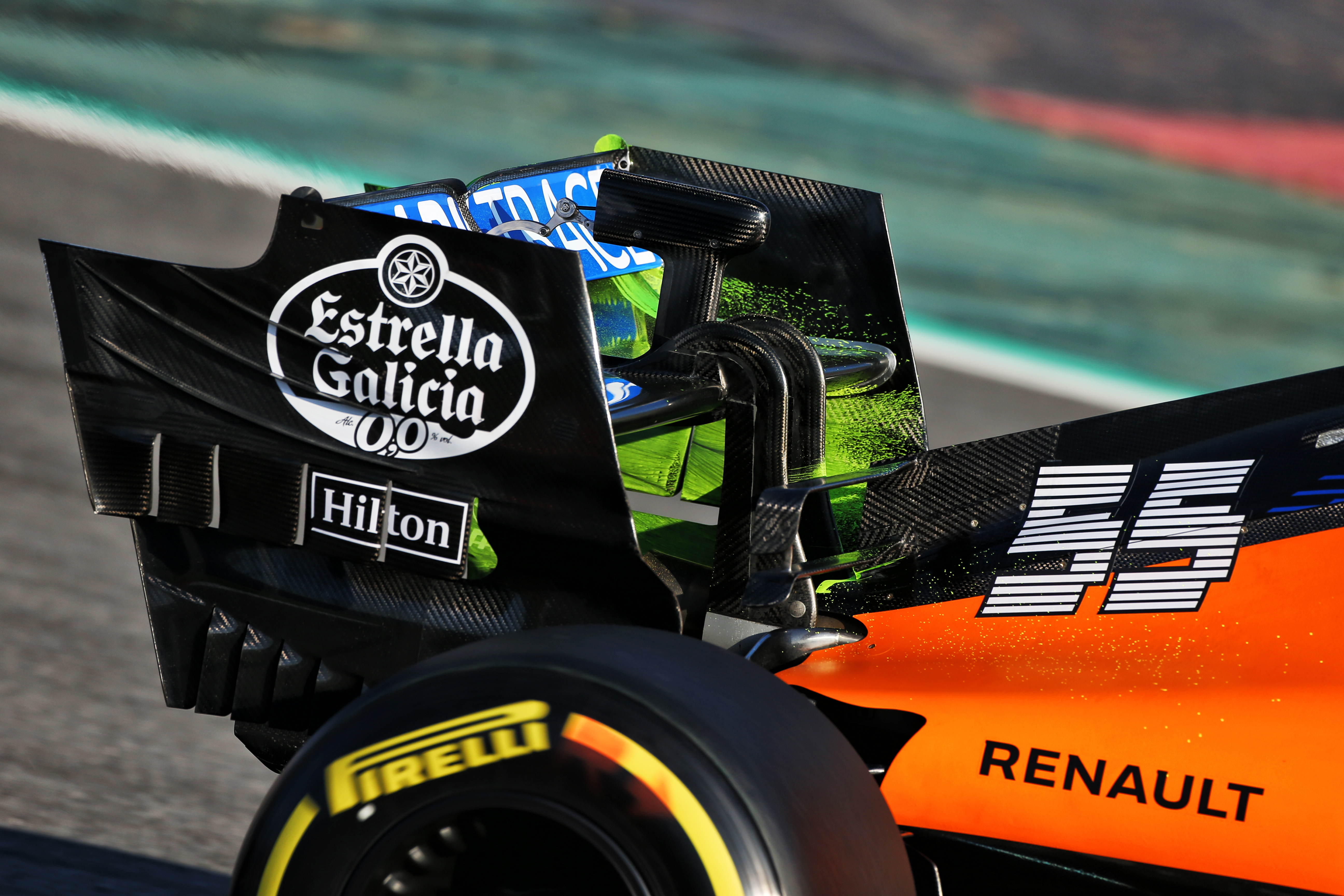Up Next

Throughout testing, Formula 1 teams will regularly conduct aerodynamic testing to gather data to further their understanding of the aero map of the car and validate the correlation with the windtunnel and CFD data.
There are many ways teams go about this, some of them very obvious to the eye and some of them a little more subtle.

AERO RAKES
Throughout testing, cars have headed onto track with what I like to call ‘bed ends’ – these vast arrays that are bolted onto the car full of pitot tubes, which measure the air velocity.
These have become a big thing in recent years, primarily because you want to measure what’s happened to their airflow away from surface of the car.
At the corner of every square on the rake is a little pitot tube, so they are probably around five centimetres apart. They have a hold in the end and in the side measuring pressure. This data will go into a mechanism that’s logging the data.
They are just another version of the pitot tube on the front of the chassis that’s always there. You also see these on aeroplanes, measuring the airspeed.
So when you are gathering data, you measure the airspeed and you also have the car speed from the normal data systems. Some can also pick up the direction of the flow, but it’s not necessary because you can generate that direction from different pressures.
You have got to be careful because you can’t carry these rakes for free and it does affect the airflow further down the car.
You will end up with multiple pitot tubes all monitoring a small area, gathering data to allow you to build up detailed data. When teams use it, they are really doing their homework and you will see different rakes and set-ups in different places depending on what is being tested.
There was a time when CFD was in its infancy and it wasn’t a product you’d use to design your car, but now it’s essential given the limitations on windtunnel time – although there are also limits on CFD. You must use both, together, along with real-world data to do the job.
When I was at Jordan, we designed our first part in CFD in 1997. It was the foot area of the floor around the rear tyre by a young guy – he’s not so young now but he’s still at the team, which is now Racing Point.
So we modelled up one solution in CFD that was good, better than what we had, and one that was bad and worse than what we had. We built both, went testing and the one that we thought was better was.
You have got to be careful because you can’t carry these rakes for free and it does affect the airflow further down the car. And because the airflow downstream also affects the front of the car because everything affects everything else. But it will get you closer than if you had nothing.

FLO-VIS PAINT
The flo-vis paint we see on cars is all about identifying the airflow on the various surfaces, and you will often see teams using it a lot on areas where that airflow is not doing what is expected. So you are trying initially to check what the airflow is doing in the surface, then look into areas where there might be a problem.
You paint it on and take to the track and it will go the way the airflow is on the surface and then dry. If you put it on the front of the car, you can see where the airflow is going. The Williams with the paint on the front wishbone legs is a good example because the suspension are critical to realigning the airflow off the front wing.

There will be flo-vis all over these cars at one time or another to see where the airflow is going. If you put it on the underneath of the rear wing and the flap is stalling, the paint lines won’t reach the top of the rear wing.
The thing you have to be careful of is it only dries once. Many years ago, we put a tube on the rear wing with a row of holes along the bottom of the wing. We connected it to a windscreen washer and pump so whenever a driver got up to the right speed he pressed a button and it was released. But otherwise you have a short window for it to dry and need to make sure you are at the speed it wants as it could be dry by Turn 9 here on your outlap.

CONSTANT SPEED RUNS
You also see constant-speed runs even without aero rakes or flo-vis paint on. These are about plotting the downforce, which is done using the high-definition load cells that are on the pushrods of the car.
But if you are accelerating or deceleration you lose or gain forces through the suspension, so constant speed is about minimising and stabilising the loads to get accurate readings. This is a standard thing because unless the wind has changed you are getting the same loads. Even if the airspeed has changed, the pitot on the front of the car will tell you.
You can do this down the front and back straight here because they are opposite directions. It’s not perfect but it allows you to do these in roughly both directions.




